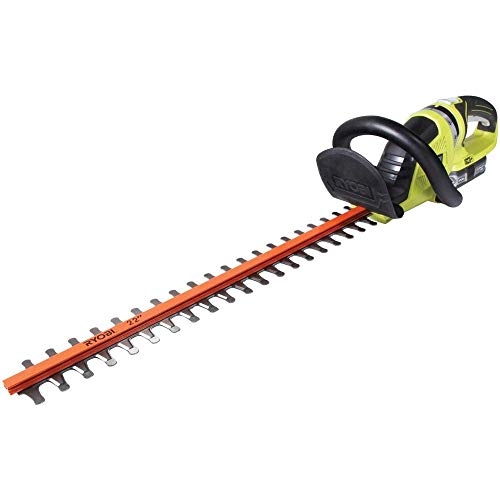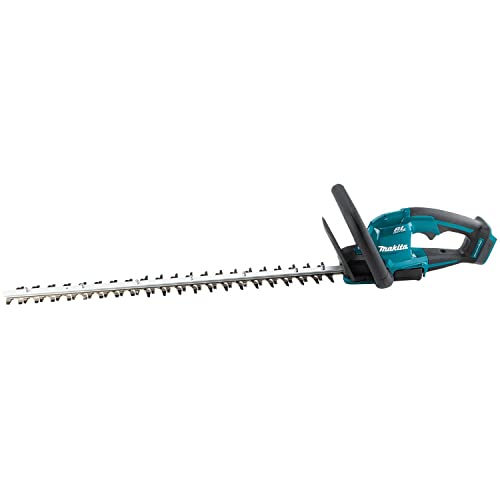I've tested dozens of hedge trimmers, and know how to buy the very best – this is my expert advice
Here's how to weigh up all the options when you're buying a hedge trimmer
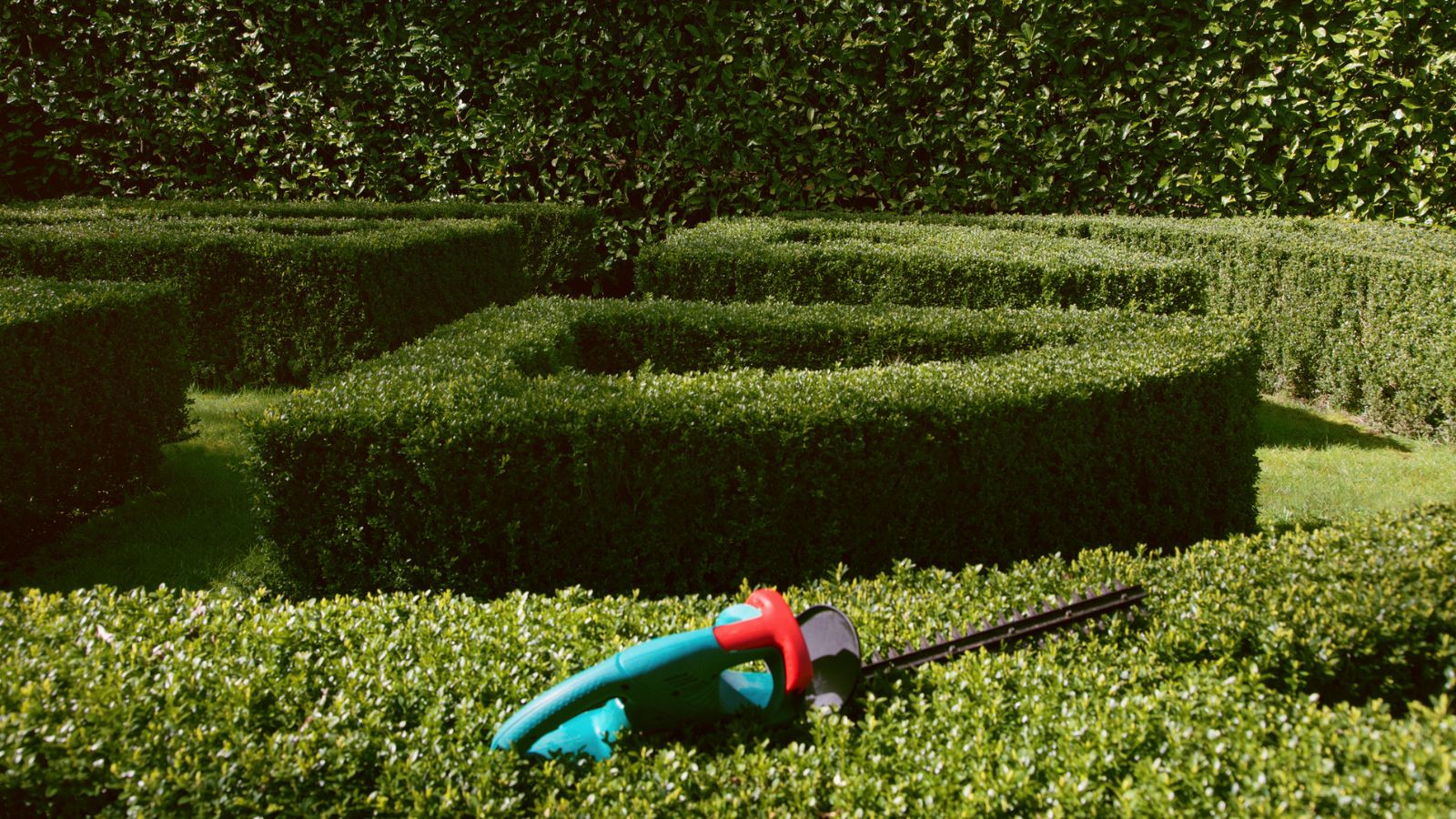

There are times when even the best hedge shears aren't up to the task. If you need to cut a large hedge with dense branches, you need a powerful hedge trimmer.
These tools are gardening essentials, turning a day of hard work chopping branches by hand into a couple of hours, and offering clean, precise hedgerows and shrubs.
But finding a good hedge trimmer can be tricky. As a product tester who has tried dozens of market-leading hedge trimmers, here's everything to look out for when you're in the market for one of these power gardening tools.
1. Opt for electric or battery-powered hedge trimmers over gas
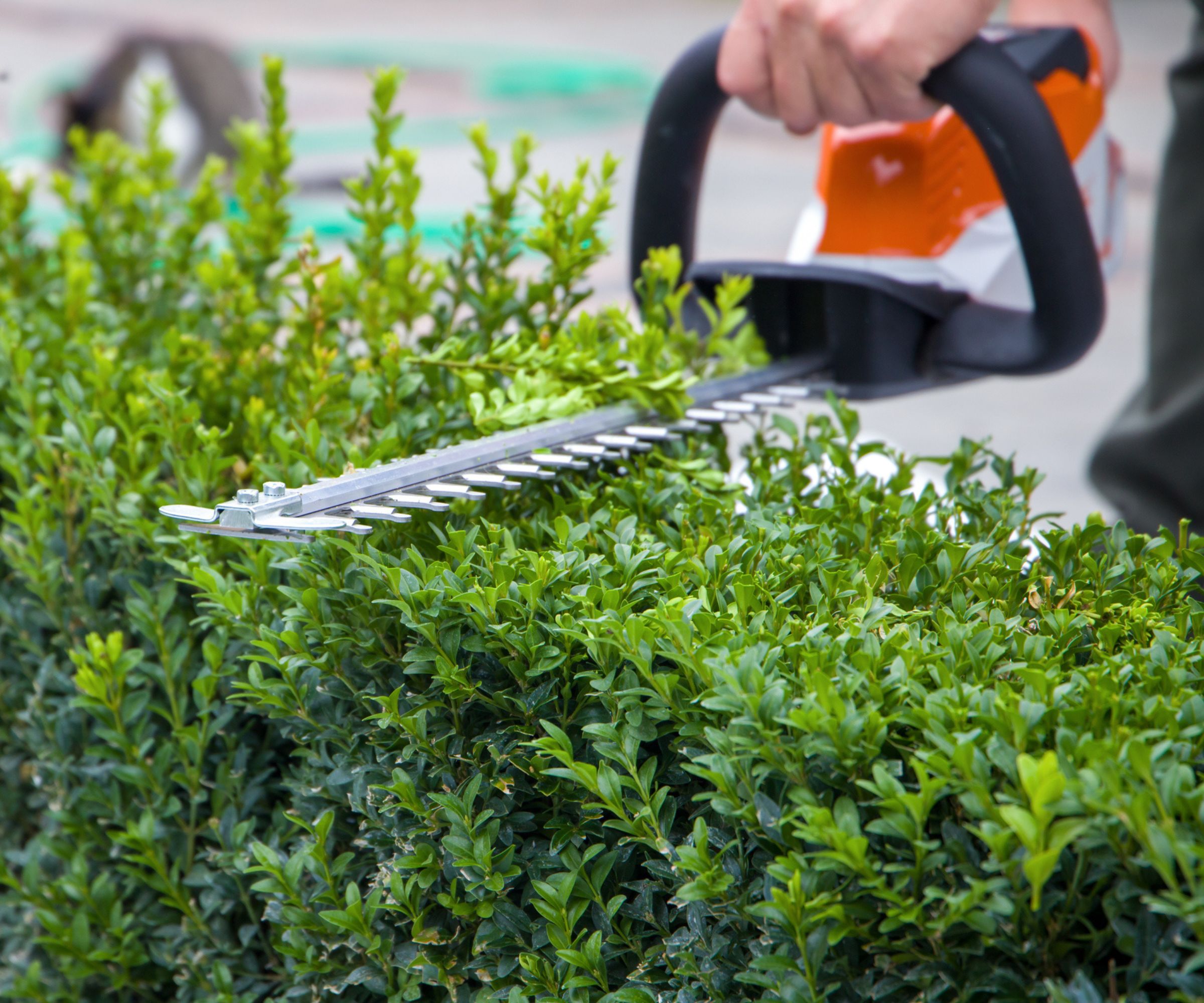
Lots of hedge trimmers are gas-powered, but you should think twice before you buy one. There are a couple of reasons for this. The first is that gas engines are slowly being phased out by manufacturers and legislation. Gas engines contribute more to greenhouse gas emissions than cars, so many municipalities are considering a ban on these hedge trimmers.
For example, the small engine ban in California means you can't buy gas-powered yard equipment in-state, and while it's the only state-wide ban, legislatures across the country are considering similar bans. Gas-powered leaf blowers are banned in Washington, DC, and Burlington, Vermont, and other types of gas-powered yard equipment may come under similar bans. This means that many manufacturers are turning away from gas-powered hedge trimmers in favor of cordless or corded hedge trimmers. So, while you can still buy a gas-powered hedge trimmer, you may find it hard to find parts to fix it over the coming years.
On top of the ecological reasons, gas-powered hedge trimmers are harder to use than cordless trimmers. Gas trimmers are much noisier because they have the noise of the engine as well as the blades. They emit noxious fumes, which is not the case with electric trimmers, and they're also much heavier than cordless trimmers because their two-stroke engine weighs more than a lithium-ion battery. There's also all the hassle of filling them with gas, and they're more liable to break than cordless hedge trimmers.
However, gas trimmers still have a use case. The only reason to consider a gas trimmer is if you have a lot of hedges to trim. The best cordless hedge trimmers have a top runtime of around an hour, which may not be long enough to cover your whole garden.

This long 25" hedge trimmer is perfect for cutting large hedges made of thick wood. It also rotates, which means you can cut vertical hedges without holding up the trimmer at an awkward angle. Just bear in mind that this price doesn't include the battery.
2. Check the Ah on cordless hedge trimmers
If you have a large hedge to trim but want a cordless hedge trimmer, consider Ah.
Ampere hours, or amp-hours, are a measure of a battery's current over a given rate for a given period. For example, a battery rated at 4.5Ah can draw 4.5 amps over an hour.
Many cordless hedge trimmers below $150 have batteries with low ampere hour readings of 2.0 or 3.0Ah.
It's not a one-to-one comparison, but this often indicates a low battery life. Hedge trimmers can draw a lot of current, more than the battery can put out over an hour, which means a shorter runtime.
I've used cordless hedge trimmers with low Ah batteries - the Kärcher HGE 18-45 from Amazon running a 2.5Ah battery, for example - that tap out at around the twenty-minute mark. If you can, aim to buy a cordless hedge trimmer with a battery of at least 5Ah.
3. Spend between $150-$300

Aim to spend between $150-$300. Much below $150 and you're probably looking at a cheaply-made hedge trimmer that, forgive the pun, doesn't cut it. Most hedge trimmers below $150 are corded, which is fine, but there's a high likelihood that you'll cut through the cable, which can be dangerous. Most cordless hedge trimmer at around this price point have low Ah batteries that don't hold a charge.
However, don't spend more than $300. You don't get any bonus features above this price point, so you're paying a premium without any benefit.
4. Ensure you have good safety features
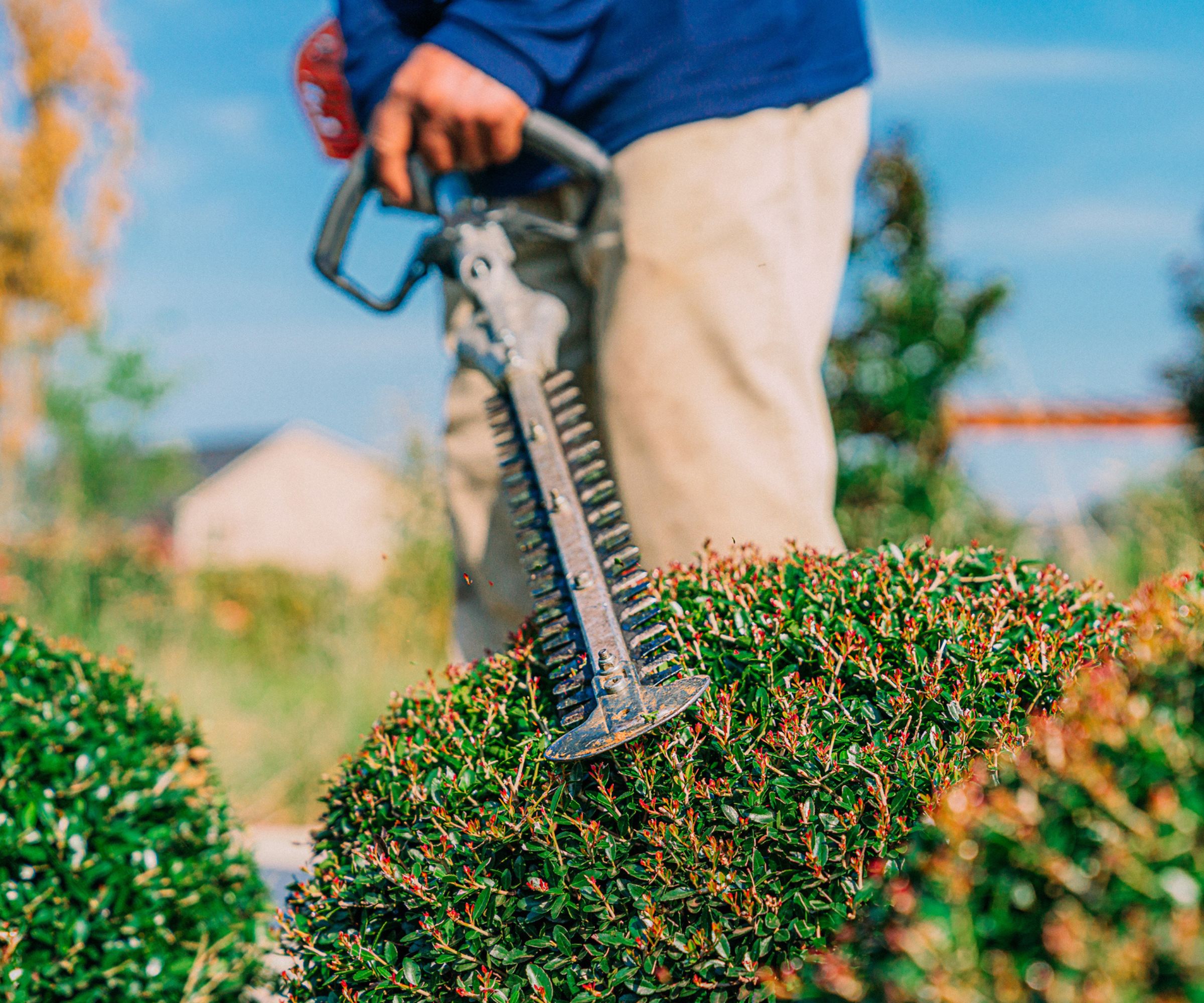
There are some safety features that are essential to a good hedge trimmer.
The most important is a hand-guard. This is just as it sounds, a plastic guard above the blades to protect your hands. Look for as wide a hand guard as you can for maximum safety. It's not a deal-breaker, but the best hedge trimmer guards are made of transparent or translucent plastic, so you can see all of the blades as they work and achieve a better cut. The Worx Nitro 22" from Amazon is a great example of this.
It's almost standard across the industry, but make sure your hedge trimmer has a tip protector at the end of the blades. This little plastic cap prevents the blades from chipping if you drop the trimmer, and it means that it can't cut at the tip. That's great if you're trimming a low hedge in front of a fence and don't want to damage the wood paneling. Good tip protectors will have a hanging hole at the top so you can store the trimmer in your garage or shed.
If you can, buy a hedge trimmer that comes with a plastic cover. This not only prevents the blades from rusting but keeps the hedge trimmer safe while in storage, covering the blades so there are no exposed sharp edges.
Finally, make sure the hedge has a dead man's switch running around the whole handle. Just like in a push mower, a hedge trimmer will only run when you squeeze the handle and will turn off when you let go. Just make sure that it runs around the whole handle. There will be times you have to switch dominant hands to get into nooks and crannies, and if the dead man's switch is only on the right-hand side, for example, it might limit your cutting.
5. Match the blades to the bushes
You should also tailor your hedge trimmer to your hedges. If you have a small, decorative hedge, opt for a 16-inch blade. Pro gardener and gardening writer at H&G Drew Swainston explains that 'The smaller blade gives closer control and makes it easier to cut your hedge into shapes. Smaller blades are also best for hedge plants made of thin branches like yew or boxwood.'
If you have a larger hedge or shrub made of thicker, denser branches like laurel, holly, or cypress, you need an 18-22 inch blade. This will be best for cutting through large amounts of harder wood, but you give up some control over the shape.

Drew qualified as a journalist and wrote for many websites and publications, before studying for a horticulture qualification. He worked as a professional gardener for several years, specializing in kitchen gardening. He's now bringing his expertise and passion to Homes & Gardens.
6. Consider a pole trimmer

If you have high hedges, consider buying a pole trimmer. This will save you for having to climb up a ladder to trim your hedge or level out the top. It also makes for more efficient trimming, because you can use wide, swinging strokes over the face of the hedge much faster than with a classic hedge trimmer.
The drawback is that this offers much less control, so you won't have a neat a cut as you would with a hedge trimmer. On top of that, these trimmers are often more expensive than the classic trimmer.
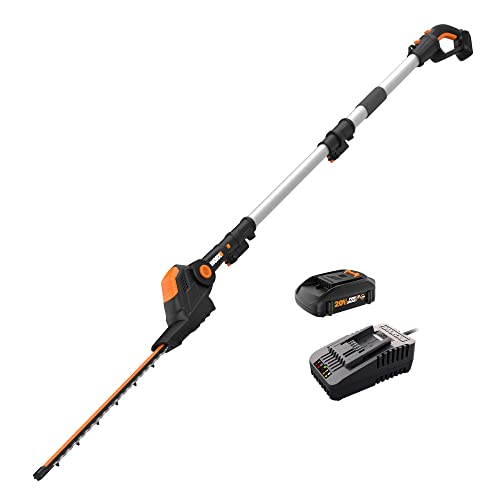
This is the archetype of a good pole hedge trimmer. Reaching up to 12 feet tall, The angle on the head is adjustable, so you can trim across the top of your hedge for a perfectly flat top without getting out the ladder.
Hedge trimmers are far from the only tool for pruning. They can cut a huge amount of biomass but sometimes you need much more detailed work. I've tested dozens of the best pruners and best hedge shears for when you need to get hands-on and tackling your pruning up close.
Sign up to the Homes & Gardens newsletter
Design expertise in your inbox – from inspiring decorating ideas and beautiful celebrity homes to practical gardening advice and shopping round-ups.

As a gardens and lifestyle contributor, Alex makes sure readers find the right information to help them make the best purchase. Alex got his start in reviewing at the iconic Good Housekeeping Institute, testing a wide range of household products and appliances. He then moved to BBC Gardeners’ World Magazine, assessing gardening tools, machinery, and wildlife products.
-
 Charred little gem with saffron dressing
Charred little gem with saffron dressingThis recipe with charred little gem is both easy to make and sure to impress guests. It's the perfect side for fresh spring menus
By Alice Hart
-
 Grilled asparagus with herb and pickled red onion
Grilled asparagus with herb and pickled red onionThis grilled asparagus couldn't be easier, and it's a wonderful way to get the best flavor from our favorite spring veg. It's perfect alongside fish or lamb
By Alice Hart
